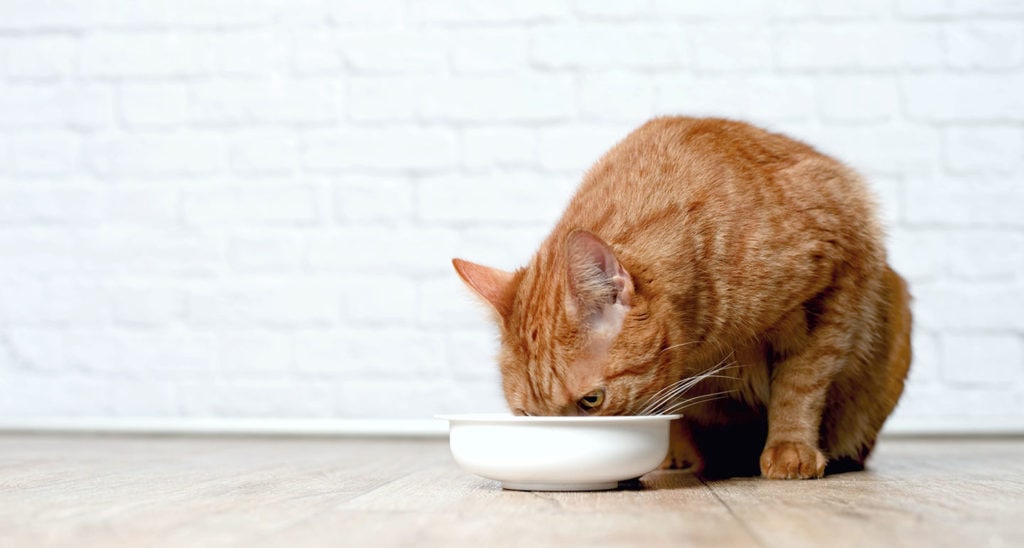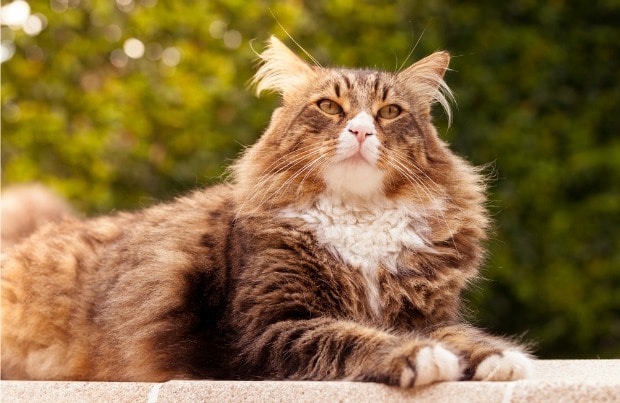You want what you’re feeding your feline friend to be, well, purrfect. Trouble is, there are so many choices for cat nutrition, and they all claim to be high quality. It’s tricky to figure out what the best cat food is when more and more products are being launched. In fact, the U.S. pet nutrition market is expected to reach more than 30 billion dollars in the next five years, according to a report by Zion Market Research. To help you take the guesswork out of what to buy the next time you’re looking to change your kitty’s diet, consider these factors pertaining to your cat’s nutrition:
Carb Count
“Some nutritionists believe that cat owners should stick with foods that are lower in carbohydrates, since some cats don’t tolerate a high-carbohydrate diet,” says Dr. Susan Wynn, DVM and board-certified nutritionist at BluePearl Veterinary Hospital. In fact, in their natural environment, cats consume prey that contains high protein, moderate fat and few carbs, according to the Cornell University College of Veterinary Medicine. Unfortunately, carbohydrates aren’t listed on a pet food’s label, so you’re going to have to do a little math. You’ll want to add together the percentages of protein, fat, fiber and moisture listed on the label, and then subtract the result from 100. Low-carb is usually considered less than 10%. Tiki Cat Grain-Free Canned Cat Food is carb-free or contains just a small amount, depending on the flavor. Another option is Wellness Complete Health Chicken Formula Grain-Free Canned Cat Food, which contains about 6% carbs.
A Raw Diet
If you’re looking to feed your cat a raw diet but are concerned about food safety, freeze-dried foods like Stella & Chewy’s Chick Chick Chicken Grain-Free Dinner are a good choice. Manufacturers put the food in vacuum chamber where the temps remain below freezing. Since nearly all the moisture is removed, it’s a highly concentrated source of nutrients. You rehydrate the food with water before serving. Since the packages are smaller and don’t weigh much at all, they’re ideal if you have limited storage space.
Industry Standards
Look for a statement from the Association of American Feed Control Officials (AAFCO) to ensure that you’re buying complete and balanced cat food for the appropriate life stage, suggests Dr. Amy Farcas, DVM of Veterinary Nutrition Care in San Carlos, California. “Cats have requirements for 40 or so essential nutrients,” says Dr. Farcas. “They need to be present in the right quantities and in the right proportion to the total calories consumed. They also have to be bioavailable and digestible.” The AAFCO statement to ensure complete and balanced cat food is typically found on the back of bagged dry cat food. Taste of the Wild Rocky Mountain Grain Free Dry Cat Food, for instance, is formulated for all life stages, including gestation, growth and maintenance, while Blue Buffalo Wilderness Chicken Recipe Grain-Free Cat Food is formulated for maintenance.
Free-Choice Feeding
You know what happens to you when you leave a bowl of candy on your desk? You’re reaching in all day—whether you’re hungry or not. Well, the same thing happens to cats. If they have access to bowls of food all day long, chances are they’ll want to graze even when they’re not hungry. “Most veterinarians now believe that free-choice feeding is a bad idea,” points out Dr. Wynn.
Your Vet’s Advice
Since your vet knows your cat’s medical history (including weight and the presence of nutrition-influenced health conditions, like diabetes), it’s smart to seek their opinion about pet nutrition. Even if your vet feels uneasy about giving an opinion on the best cat food, they’ll be able to tell you what type of diet is optimum for your feline family member.
By: Chewy Editorial
Share:














